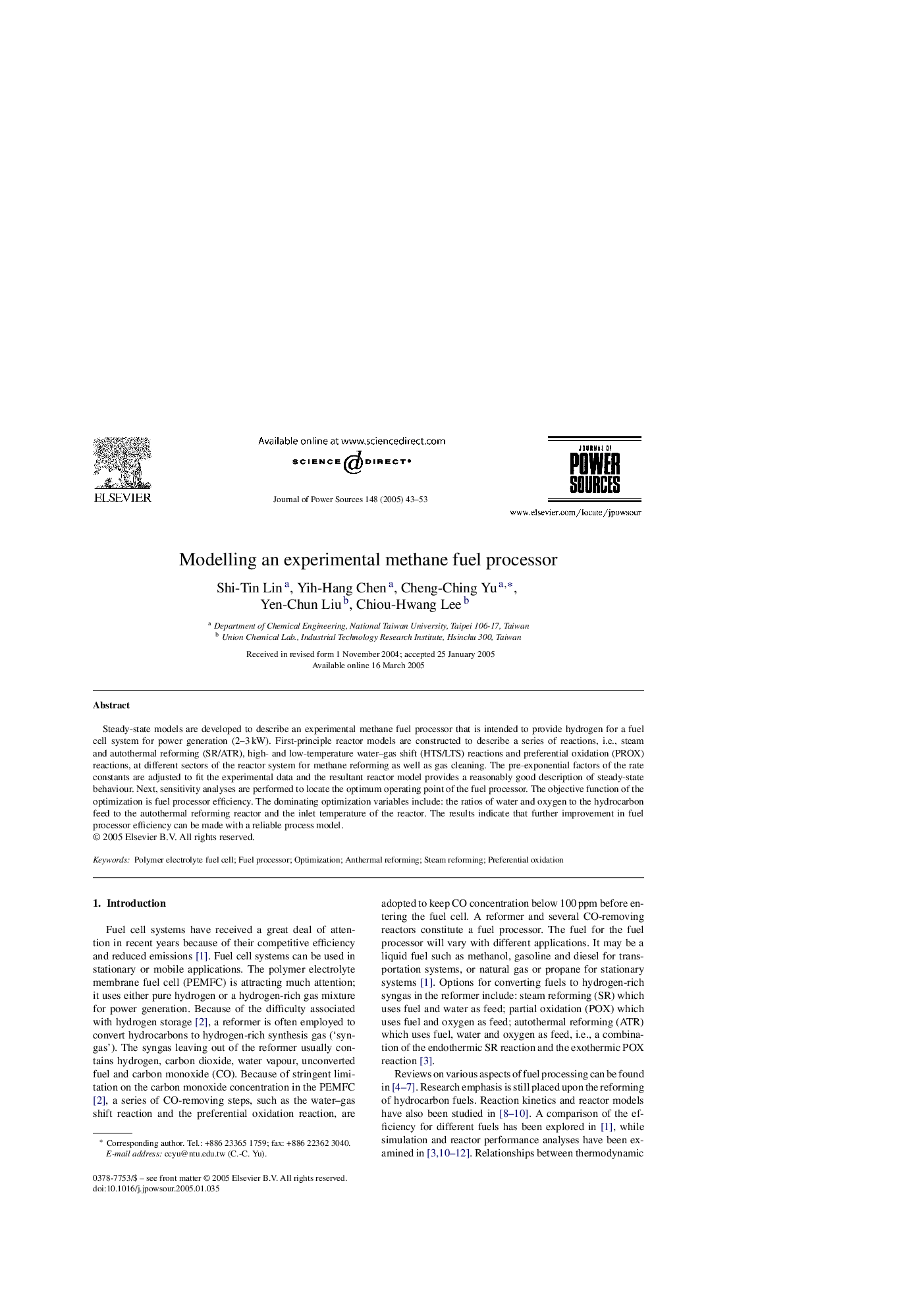| Article ID | Journal | Published Year | Pages | File Type |
|---|---|---|---|---|
| 9760221 | Journal of Power Sources | 2005 | 11 Pages |
Abstract
Steady-state models are developed to describe an experimental methane fuel processor that is intended to provide hydrogen for a fuel cell system for power generation (2-3Â kW). First-principle reactor models are constructed to describe a series of reactions, i.e., steam and autothermal reforming (SR/ATR), high- and low-temperature water-gas shift (HTS/LTS) reactions and preferential oxidation (PROX) reactions, at different sectors of the reactor system for methane reforming as well as gas cleaning. The pre-exponential factors of the rate constants are adjusted to fit the experimental data and the resultant reactor model provides a reasonably good description of steady-state behaviour. Next, sensitivity analyses are performed to locate the optimum operating point of the fuel processor. The objective function of the optimization is fuel processor efficiency. The dominating optimization variables include: the ratios of water and oxygen to the hydrocarbon feed to the autothermal reforming reactor and the inlet temperature of the reactor. The results indicate that further improvement in fuel processor efficiency can be made with a reliable process model.
Keywords
Related Topics
Physical Sciences and Engineering
Chemistry
Electrochemistry
Authors
Shi-Tin Lin, Yih-Hang Chen, Cheng-Ching Yu, Yen-Chun Liu, Chiou-Hwang Lee,
